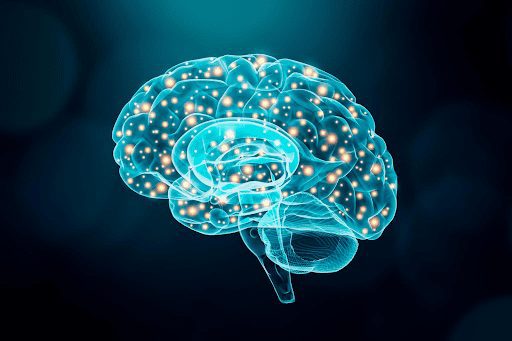For many people living with depression, traditional treatments like medication and therapy result in at least partial symptom relief. However, up to 40% of individuals may have treatment-resistant depression, meaning that they have inadequate response to at least two different antidepressant medications. Finding treatments for severe or difficult-to-treat depression is critical, and neurotechnology provides promising options.
Deep brain stimulation (DBS) involves surgically placed brain implants—this compared to Deep TMS, which is a noninvasive medical device treatment that delivers magnetic pulses externally. Here we will review how both depression treatments utilize advanced therapeutic technology to provide symptom relief.

Deep brain stimulation is a new and promising approach for treatment-resistant depression using surgically implanted brain electrodes. The technology has been used for years to treat other conditions and may provide a personalized approach to chronic depression treatment for more individuals.
Electrode implants are not new to clinical medicine. Open-loop DBS involves manual adjustment of stimulation of brain structures every few months and has been used to treat epilepsy and Parkinson’s disease. Some pacemakers use a closed-loop process, where the device automatically makes adjustments to an individual’s heart rhythm based on electrical signals from specific locations in their heart.
DBS has been explored as a potential treatment for persistent depression before, but with mixed results. Previous studies utilized the same stimulation target in the brain for all participants, leading to mixed efficacy results. Some participants showed symptom improvement but the difference was often not significant.
Closed-loop DBS utilizes a brain implant for depression treatment. First, an individual’s brain is mapped, locating regions associated with the most intense depression symptoms, as well as with consistent, sustained improvement of symptoms. Next, the connectivity between these regions is examined to determine how effectively the brain integrates signals. These regions are identified by patterns of neural activity related to mood fluctuations and brain activity signals of depressed mood.
When this network has been sufficiently defined and mapped, several electrodes are surgically implanted near the identified regions. These electrodes automatically stimulate the identified sites based on specific symptom-related neural activity. Because stimulation is delivered based on an individual’s unique biomarkers, treatment can be personalized and synced with symptoms as they occur in real time.
It will take multiple future studies to fully explore the benefits and limitations of closed-loop DBS. This initial study was done not to establish efficacy for closed-loop DBS, but to show proof-of-concept for this innovative approach to treating neuropsychiatric disorders. Closed-loop DBS demonstrates the potential of utilizing brain implants for depression treatment when first-line interventions have fallen short.
Transcranial magnetic stimulation (TMS) is a noninvasive treatment utilizing magnetic pulses to impact the neural activity of specific brain structures associated with depression symptoms. These pulses are delivered by a technician using a handheld device during 20-40-minute treatment sessions, over a period of several weeks. During the course of treatment, TMS helps stabilize the neural activity of the targeted brain structures.
Since 1985, TMS has been available as an FDA-cleared treatment for depression and other mental health and neurological conditions. Traditional TMS has developed a history of safety and efficacy, especially for individuals who have not responded well to other treatments. The process requires no anesthesia, can be conveniently scheduled during an individual’s typical daily schedule, and has no long-term side effects. Years of established efficacy mean TMS can be used as a standalone treatment, and its noninvasive nature makes it a compatible partner with other therapies.
Deep TMS is a more advanced iteration of transcranial magnetic stimulation. Instead of delivering pulses with a handheld device, Deep TMS utilizes a helmet to improve accuracy, cover a wider area of the brain, and penetrate more deeply through the brain tissue. The expanded capabilities of Deep TMS enable it to reach wider areas of the brain simultaneously, while also reaching deeper areas of the brain, allowing it to directly regulate the neural activity of the relevant neural structures located in these areas.

Technological depression treatments are helping individuals who may have lost hope find symptom relief. While effective DBS interventions are still in the earliest stages of exploration, TMS treatments are more widely available. And both approaches are defining the next generation of innovative depression treatment.